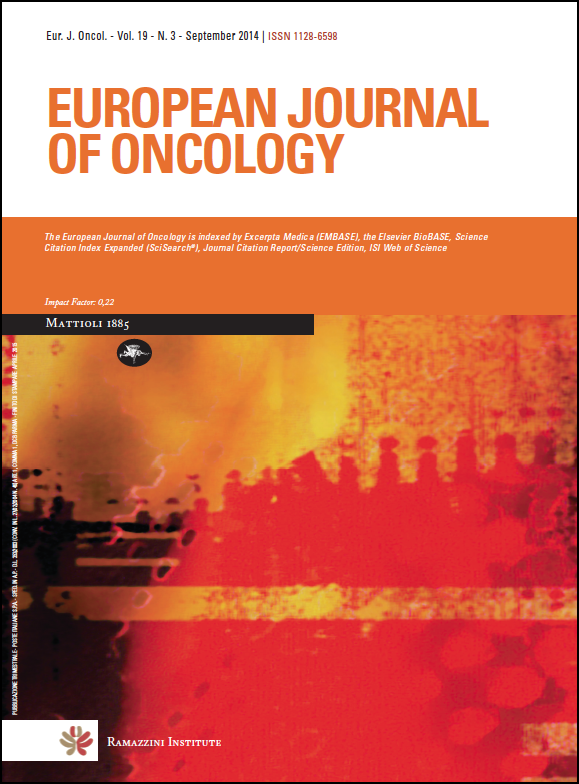Vascular endothelial growth factor receptor-3 is independently associated with cervical lymph node metastasis in papillary thyroid carcinoma
Keywords:
papillary thyroid carcinoma, VEGF, VEGFR, lymph node metastasisAbstract
Objective: Papillary thyroid carcinoma (PTC) is the most common type of thyroid cancer. Despite excellent prognosis, the presence of cervical lymph node metastasis (cLNM) has a significant impact on tumor recurrence. However, the clinical management of cLNM remains controversial. The present study aims to shed light on the correlation between markers for hypoxia, angiogenesis and lymphangiogenesis, as well as cLNM in PTC. Methods: Ninety-five paraffin-embedded surgical specimens of PTC were constructed into tissue microarray. Immunohistochemical staining for markers of hypoxia (HIF-1α and CA-IX), angiogenesis (VEGF-A, VEGF-C and VEGFR-2), and lymphangiogenesis (VEGF-C, VEGF-D and VEGFR-3) was performed. A Kaplan-Meier plot of recurrence was performed according to the VEGFR-3 status. Results: Out of all the PTC cases, 11.6% had cLNM. CA-IX, VEGF-D and VEGFR-2 were associated with capsule invasion. Of the biomarkers, VEGF-C and VEGFR-3 were correlated with cLNM. The Kappa coefficient test showed that HIF-1α and CA-IX correlated with VEGF-A, which, together with VEGF-C, correlated with both VEGFR-2 and VEGFR-3. In contrast, VEGF-D was only associated with VEGF-C. Conclusions: VEGF-C and VEGFR-3 are associated with cLNM but only VEGFR-3 independently correlates with cLNM after adjustments for TMN staging. It may be useful to perform VEGFR-3 immunostaining in primary resected thyroid carcinoma specimens.Downloads
Published
Issue
Section
License
OPEN ACCESS
All the articles of the European Journal of Oncology and Environmental Health are published with open access under the CC-BY Creative Commons attribution license (the current version is CC-BY, version 4.0 http://creativecommons.org/licenses/by/4.0/). This means that the author(s) retain copyright, but the content is free to download, distribute and adapt for commercial or non-commercial purposes, given appropriate attribution to the original article.
The articles in the previous edition of the Journal (European Journal of Oncology) are made available online with open access under the CC-BY Creative Commons attribution license (the current version is CC-BY, version 4.0 http://creativecommons.org/licenses/by/4.0/).
Upon submission, author(s) grant the Journal the license to publish their original unpublished work within one year, and the non exclusive right to display, store, copy and reuse the content. The CC-BY Creative Commons attribution license enables anyone to use the publication freely, given appropriate attribution to the author(s) and citing the Journal as the original publisher. The CC-BY Creative Commons attribution license does not apply to third-party materials that display a copyright notice to prohibit copying. Unless the third-party content is also subject to a CC-BY Creative Commons attribution license, or an equally permissive license, the author(s) must comply with any third-party copyright notices.

